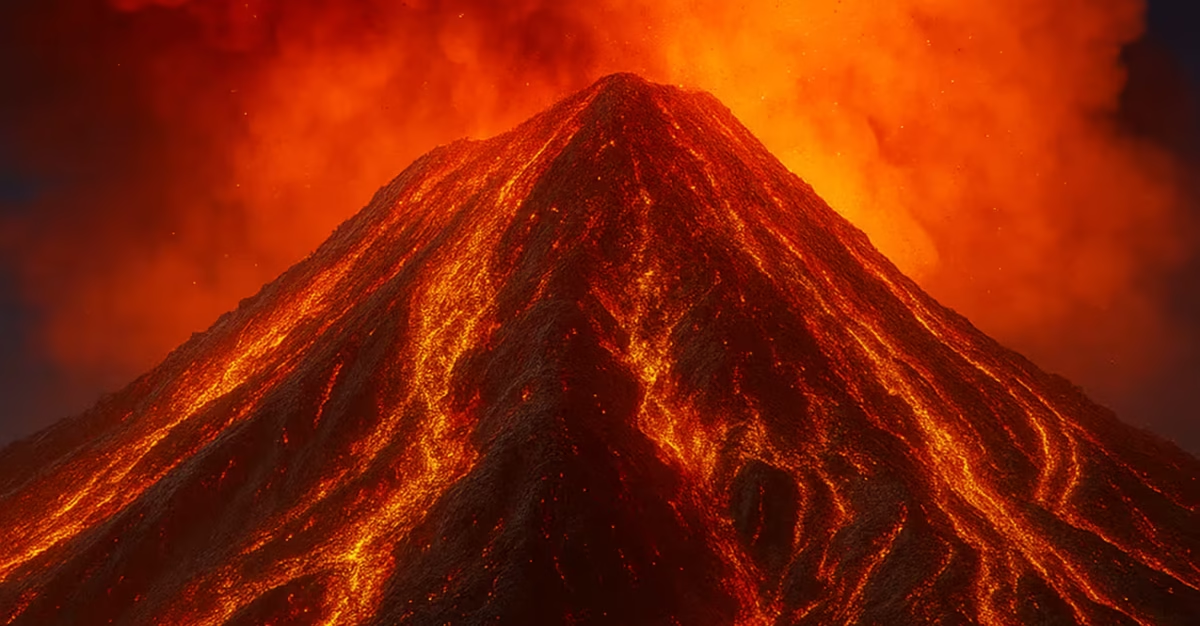Dramatic Pyroclastic Flows and Lava Fountains Force Tourists into Panicked Retreat
Mount Etna Roars to Life: June 2025 Eruption Sends Ash Cloud Soaring 21,000 Feet Over Sicily
⛰️ The Eruption Unfolds: Hour-by-Hour Chaos
Mount Etna awakened violently on June 2, 2025, at 3:50 AM local time. Italy’s National Institute of Geophysics and Volcanology (INGV) reported “almost continuous” strombolian explosions from the Southeast Crater, escalating into a lava fountain by midday . Infrared imagery captured rivers of molten rock cascading down the volcano’s slopes, while ash plumes rocketed to 6,400 meters (21,000 feet)—prompting Toulouse’s Volcanic Ash Advisory Centre to issue a rare “code red” aviation alert .
Dramatic social media videos showed tourists sprinting down trails as pyroclastic flows—superheated gas and debris—raced toward the Valley of the Leo. Trekking guide Mario Denaro captured the chaotic retreat, later tweeting: “In 20 years on Etna, I’ve never seen such sudden intensity” .
🌋 Why Etna Is Europe’s Most Dangerous Beauty
Geological Fury: Tectonic Forces Unleashed
Mt Etna sits at a convergent plate boundary where the African Plate collides with the Eurasian Plate. Unlike typical subduction volcanoes, Etna may lie atop a hotspot—a mantle plume similar to Hawaii’s—explaining its relentless activity. With 190+ recorded eruptions since 1500 BCE, it holds the title for the world’s longest-documented eruption history .
The 1669 Catastrophe: A Warning from History
Etna’s deadliest event occurred in March 1669, when lava flows obliterated Catania, killing 20,000 people. Survivors attempted to divert the lava, triggering battles with neighboring towns—a futile effort as molten rock swallowed the city walls . This event underscores why today’s INGV monitors the volcano 24/7 with seismic sensors and thermal cameras.
⚠️ Dual Crises: Natural Fury and Human Recklessness
Tourism Gone Wild
As ash blanketed Piano Vetore, thousands of spectators flocked to the slopes, ignoring civil defense orders to stay 500 meters from lava flows. The resulting gridlock blocked rescue vehicles, with Sicily’s emergency chief lamenting: “Tourists skiing between lava flows or sinking into snowdrifts are diverting critical resources” . The irony? Etna’s February 2025 eruption drew similar crowds, proving lessons go unlearned.
Toxic Threats: The Invisible Killers
Beyond spectacle, etna’s emissions pose severe health risks. The CDC notes that volcanic gases like sulfur dioxide can cause respiratory failure or “volcanic fog” (vog) that triggers long-term lung damage . With ashfall coating Catania, authorities distributed N95 masks and warned children to stay indoors.
📈 2025: Etna’s Most Active Year in a Decade?
This eruption continues a fierce pattern:
- February 2025: Paroxysmal explosions forced Catania Airport closures.
- April–May 2025: Lava flows from Voragine Crater inched toward Zafferana.
- June 2, 2025: Pyroclastic flows mark the year’s most violent episode yet .
Table: Etna’s Eruption Frequency (2011–2025)
| Period | Key Events | Intensity Trend |
|---|---|---|
| 2011–2013 | 3-year lava fountaining cycle | ⬆️ High |
| 2017–2020 | Dominant effusive (lava flow) activity | ⬇️ Moderate |
| 2021–2024 | 12+ eruptive phases; summit crater collapses | ⬆️ High |
| 2025 (to June) | 4 major eruptions; 6,400m ash columns, pyroclastic flows | ⬆️ Extreme |
Geologist Jack Lasky notes: “2021–2022 saw Etna’s Southeast Crater grow by 100m—now, magma reservoir pressure suggests bigger events loom” .
🔬 Decoding the Science: Strombolian vs. Pyroclastic Fury
What Makes June’s Eruption Unique
Initially classified as strombolian (discrete, low-level bursts), the event rapidly evolved. As INGV’s social media update clarified: “Explosions transitioned into sustained lava fountains, generating pyroclastic density currents” . These currents—avalanches of 700°C gas and rock—can travel at 450 mph, making them the volcano’s most lethal output.
Live Monitoring: How to Track Etna in Real-Time
- INGV’s Live Cams: 24/7 feeds from Nicolosi and Santa Venerina .
- Toulouse VAAC: Ash cloud trajectory forecasts for aviation.
- Volcanic Tremor Graphs: Real-time seismic spikes predict eruptive phases .
🧭 Visiting Etna Safely: A Traveler’s Survival Guide
Do’s and Don’ts During Eruptions
✅ Book Certified Guides: Summit access requires authorized tours (helmets/gas masks provided). Companies like EtnaWay offer helicopter overflights avoiding danger zones .
✅ Monitor Alerts: INGV’s daily bulletins and EtnaTrekking app.
❌ Never Approach Flows: Contact with snow can trigger steam explosions .
What to Pack
- High-Altitude Gear: Temperatures plunge to -5°C (23°F) at 3,000m.
- Gas Masks: Rentable at Rifugio Sapienza for €5 .
- GPS Locator: Essential if hiking independently.
🌍 Etna’s Paradox: Destroyer and Life-Giver
While eruptions menace cities, etna’s ash enriches Sicily’s soil with potassium and phosphorus. The result: vineyards producing renowned Nerello Mascalese wines and orchards bursting with pistachios and blood oranges . UNESCO recognized this duality in 2013, declaring Etna a World Heritage site for its “exceptional volcanic activity and cultural influence” .
🔮 What Next? Magma Chambers Point to Prolonged Activity
On February 23, 2025, volcanologists observed magma resurgence at Bocca Nuova Crater—evidence that “this eruption isn’t over” . With tremor amplitudes still rising, INGV forecasts three scenarios:
- Short-term: Continued lava fountains through June.
- Mid-term: Flank eruption risk if magma migrates eastward.
- Catastrophic: A 1669-scale event statistically due every 250 years .
📢 Final Alert: Respect the Volcano
Mount Etna’s June eruption is a visceral reminder: nature’s grandeur demands reverence. For real-time updates, bookmark INGV’s Eruption Feed or watch the crater cams. As Sicilians whisper: “Mungibeddu è vivu—the Beautiful Mountain is alive.” And in 2025, it’s roaring louder than ever.
Cover Image: Lava fountain from Etna’s Southeast Crater on June 2, 2025 (Credit: INGV Vulcani).
Sources: [INGV], [FOX Weather], [EBSCO Research], [DKKV], [Newsweek], [The Independent].

